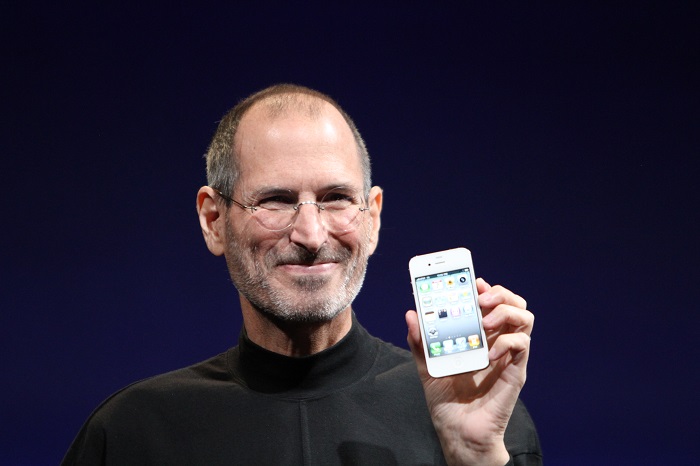A Definitive, Complete and Comprehensive List of the Biggest Tech Stories of 2019*
*Actually probably missing a lot but there’s still lots of huge stuff here.
2019 was a huge year for the world of tech. We had new devices, new ways to communicate, and new ways for digital creatives to make their mark on the world. Here’s some of the biggest stories that happened in the last year:
Foldable phones a total flop
They were meant to be the Next Big Thing and usher in a new era of website design. But the foldable phone came, and went, with a whimper. The flagship of the concept, Samsung’s $2,000 Galaxy Fold, was teased for months as a must-have gadget for people who couldn’t decide if they wanted to own a phone or tablet.
However, within days of production-ready units being used out in the wild by technology reviewers the cracks started to appear – literally. The plastic coating over the main screen was easily removed (many people thought it was meant to be taken off) and that irrevocably destroyed the entire unit. The company quickly postponed the official launch and, by the time it finally rolled out onto shelves in September, everyone had realised they didn’t really need one anyway.

So many streaming options
Do you have Netflix? How about Stan, or Amazon Prime? Maybe you subscribe to YouTube Premium, or Apple TV, or Disney +?
Back in the long distant past of the ‘90s if you wanted to pay extra to watch more content on your television there were one or two cable TV providers, and a massive monthly bill to go with it. Times change, and the internet has brought with it the concept of streaming video-on-demand that offered what you wanted, when you wanted it, and at a fraction of the price of cable. Netflix was the first big player in this market and it seemingly had everything you could imagine.
However, once the major content providers caught wind of how much money Netflix was making off their content and started making their own streaming service. Now, we have dozens of services to choose from, and more on their way in 2020 from the likes of Warner Brothers, NBC Universal and the BBC, each costing around $10 a month. In other words, if you want all the content you used to enjoy from one cable TV provider, you’re going to need to pay cable TV prices again.
Twitter bans political advertising
Twitter’s a great place to go if you want up-to-the-minute technology news, hilarious memes and random strangers sliding into your DMs to tell you what’s wrong with Star Wars these days. It’s also a major broadcasting platform for political entities. Every major politician has a Twitter profile, and some are so prolific on there that their tweets are taken as statements of official public policy.
After fostering a huge political component to its community, Twitter surprised many when they announced this year that they were banning political advertising on the platform. Some saw it as a good move that will avoid the political advertising scandals that have rocked their main rival Facebook recently. Others decried the ban as it could silence new voices in politics who do not already have the same outreach as established candidates.
Instagram removing likes
Watching an Instagram post rack up the number of likes was sometimes more entertaining than the content of the post itself. However in 2019 Instagram trialled, and then made permanent, the removal of public like counters.
Why? The Facebook-owned company said that it was to make users more engaged with the actual content, and that post like numbers could be used for bullying purposes. It was never really made entirely clear what the advantage of removing this information was. If you made a post you can still see how many likes you get, so you can still chase that fleeting adrenaline rush from finding out 25 of your closest friends agree that your pet cat is adorable.

Larry Page and Sergey Brin leave Google
Larry Page and Segey Brin, the two creators of Google’s Page Ranking system which basically made “algorithm” a household word, were always at the forefront of Google and guided not only their technological direction but the moral guidelines the company stood by. They were the ones who put up a sign saying, “Don’t be evil” that was meant to be at the forefront of every decision the company made as it wrestled with bigger problems.
However, the two have recently departed Google and instead gone onto looking at different projects as part of the parent company Alphabet. While in their initial public statement announcing this change the pair assured people they’d still be a part of Google, they haven’t been seen in internal meetings for several months now and there’s no sign of when they’ll return. Nobody’s seen that “Don’t be evil” sign for a while either.
Microsoft securing white house deal for security
Microsoft play a public role in so many parts of our daily life. Chances are your home or work computer runs Microsoft software, or there’s Microsoft products in your home entertainment system. The company also does a lot of stuff beyond making your word processors and forcing your PC to update when you’re in the middle of something important.
They do a lot of work in the business application fields of cloud storage, artificial intelligence, augmented reality and machine learning, all of which are things that the United States military are becoming increasingly interested in. In 2019 it was announced that Microsoft had been awarded a $10 Billion contract to supply these technologies to the U.S. government as part of a Joint Enterprise Defence Infrastructure (JEDI) initiative, which is a move that has not gone down well with some Microsoft employees. Sure, it’s fun when you’re developing Hololens for video game applications, but seeing them deployed to troops in real world battlefields can make anyone reconsider what they’re doing.
Facebook blundering pretty much everything
We all thought that Facebook was just a good way to pass the time at work or while waiting for a bus. However, shortly after everyone and their Great Aunt Ethel had finished feeding the platform every part of their personal information, we all realised how dangerous an idea that was.
After a series of embarrassing leaks, Facebook and its totally real, actually a human leader Mark Zuckerberg were taken to task by the US congress about their business practices and, in particular, how they handle the safety of its user data. The short version of the company’s response was that the user’s were warned about being careful uploading their private information in that 40-page user agreement that nobody read. At any rate they then promised to be much more careful with it in the future, but by that time all the kids had moved onto Tik Tok.

Deepfakes are everywhere now
Ever wanted to see Jim Carrey doing an uncanny Jack Nicholson impression from The Shining? Or Sylvestor Stallone completely replace Arnold Schwarzenegger in The Terminator? Or Nicolas Cage replace everyone in Superman Returns? It’s all possible with deepfakes, the radical new graphic technology that allows anyone with a computer and a lot of free time to swap one face for another in a video sequence.
It’s all fun and games with entertainment celebrities perhaps, but there’s potential to cause serious harm or misinformation. It’s very easy to hire a celebrity impersonator to come up with some fictitious audio samples (and Adobe are working on technology to generate authentic sounding audio of anyone to make this step even easier), marry it to some deepfaked video and you can have an authentic-looking political propaganda that will spread across the internet within minutes.
But at least the Nicolas Cage ones are funny.
VR becoming more accessible
Virtual Reality has been on the verge of breaking through to mainstream usage for years now, and 2019 was the year that it almost, almost happened. A range of cheap and powerful headset and motion tracking systems hit the market during the year, offering more versatility and deeper integration with the virtual worlds inside.
They still haven’t figured out the two main issues getting in VR’s way: the best setups require you to rearrange your entire living room to make room for all the required cameras and lights, and you still look like a bit of a plonker while wearing that bulky headset.
But surely, this time, VR will hit big in 2020. There’s a lot of developers who are keen to take advantage of the platform, with serious applications like remote medical examinations, undersea exploration or even post-traumatic stress disorder therapy.
At iFactory we can’t wait to see what 2020 brings. Whether it’s new ways for business applications to be developed, or a hot new social media platform to transform the way we share the world around us, we’re here for it. Talk to iFactory today to see how we can bring your business into the future.

